目次
- 1 US Strikes on Iran: 12-Day Middle East Crisis
- 1.1 Background – A History of Conflict Since 1979
- 1.2 Israel’s Preemptive Strike “Operation Rising Lion” (June 13, 2025)
- 1.3 Escalation and Casualties (From June 14)
- 1.4 US Attack “Operation Midnight Iron Sledge” (June 21/22, 2025)
- 1.5 International Reactions
- 1.6 Ceasefire Announcement (June 24, 2025)
- 1.7 Prime Minister Ishiba’s Response and “Double Standard” Criticism
- 1.8 Economic Impact and Future Concerns
- 1.9 Future Outlook and Analysis
- 1.10 Key Terms Glossary
- 1.11 Conclusion
US Strikes on Iran: 12-Day Middle East Crisis
Updated June 24, 2025
On June 22, 2025, at 2:30 AM (Iran time), President Trump made a shocking announcement on his social media platform “Truth Social.” The US military had attacked three nuclear facilities in central Iran. The military conflict that began with Israel’s “Operation Rising Lion” on June 13 had entered a new phase with direct US intervention.
“This is really bad,” “Please no World War III… no more wars… I want my children to live in a peaceful world…” “This could mean blocking the Strait of Hormuz… Japan depends on 80% of its oil routes… prices will skyrocket”
On X (formerly Twitter), following Trump’s bombshell announcement, “Iran nuclear facilities,” “World War III,” and “Bunker Buster” quickly became trending topics. Concerns about the impact on Japan flooded social media.
Background – A History of Conflict Since 1979
The Iran-Israel conflict stems from the 1979 Iranian Revolution. Before the revolution, the two countries had close ties, but when the pro-Western Pahlavi dynasty fell and Iran transitioned to an Islamic Republic, the situation changed dramatically. Iran’s first Supreme Leader, Ruhollah Khomeini, condemned Israel’s occupation of Palestine and severed diplomatic relations. Since then, Iran’s theocratic regime has repeatedly used anti-Semitic and genocidal rhetoric, vowing to “destroy Israel.”
Weeks before Israel’s attack on Iran, Netanyahu’s government faced intense international pressure over starvation and civilian deaths in Gaza. The EU announced a review of its free trade agreement with Israel, and criticism mounted even from close allies. Some political scientists and journalists suggest the Iran attack was intended to divert attention from Israel’s actions in Gaza. This conflict also served to unite both left and right wings within Israel.
Israel decided to attack based on intelligence suggesting Iran had accumulated enough enriched uranium to produce up to 15 nuclear weapons within days, according to the Israel Defense Forces (IDF). Netanyahu called Iran’s nuclear program “a clear and present threat to Israel’s existence,” stating that attacks were necessary because “Iran could manufacture nuclear weapons in a very short time if not stopped.”
Israel’s Preemptive Strike “Operation Rising Lion” (June 13, 2025)
On June 13, 2025, Israel announced it had launched preemptive strikes against Iran’s nuclear facilities and other targets in response to its nuclear development. Netanyahu announced the operation was named “Operation Rising Lion.” The name derives from the “Lion and Sun,” Iran’s symbol before the 1979 revolution, or possibly from the Book of Numbers in the Bible. The operation included airstrikes, sabotage, and covert operations.
Prior to the attack, a state of emergency was declared across Israel.
Morning Attack on June 13
- Israel launched airstrikes against Iran including over 200 F-35I fighter jets. The F-35Is were reportedly modified to extend their range for operations over Iran
- Israeli forces targeted over 100 sites across Iran, including the Natanz enrichment facility and Iran’s nuclear program infrastructure
- Operating nuclear reactors like the Bushehr power plant and Tehran research reactor were not attacked, preventing nuclear accidents
- Israel’s intelligence agency Mossad destroyed Iran’s air defense systems and missile facilities from secretly established drone bases, securing air superiority for Israeli aircraft
- Explosions were reported across Tehran, with the Revolutionary Guard (IRGC) headquarters reportedly in flames
- Major nuclear facilities targeted included Natanz in Isfahan Province, as well as facilities in Khondab and Khorramabad
Continued Fighting from June 13 Afternoon
Israel continued airstrikes on nuclear facilities in Tabriz, Shiraz, and Natanz, also attacking Hamadan Air Base and Parchin military complex. Explosions were reported near the underground Fordow enrichment plant. The Israeli military confirmed attacks on Hamadan and Tabriz air bases, claiming to have “neutralized” Tabriz base and destroyed numerous Iranian drones and surface-to-surface missile launchers.
Escalation and Casualties (From June 14)
Continued Israeli Attacks
The Israel Defense Forces announced they had destroyed 120 surface-to-surface missile launchers in Iran (about 30% of Iran’s total) and secured “complete air superiority” over Tehran.
Hospitals and Iranian state broadcasting headquarters were also hit. Farabi Hospital in Kermanshah was damaged, and the Iranian Broadcasting (IRIB) headquarters was bombed during a live broadcast, killing one staff member. Israel claimed IRIB was “being used by the Iranian military for military operations,” which the Iranian government denied.
Evacuation orders were issued for parts of Tehran.
Killing of Iranian Military Officials and Nuclear Scientists
Iranian military officials were killed in succession, including Deputy Chief of Intelligence Gholamreza Mehrabi and Deputy Chief of Operations Mehdi Rabbani of the Iranian Armed Forces General Staff. Israel further announced it had killed Iranian intelligence chiefs and multiple officials (Mohammad Kazemi, Hassan Mohaghegh, Mohammad Khatami). On June 17, Major General Ali Shadmani, the highest-ranking commander in the Iranian military, was assassinated.
Iranian nuclear scientists were also casualties, with reports of 9 to 14 nuclear scientists killed, including Fereydoun Abbasi and Mohammad Mehdi Tehranchi.
Attacks on Oil Facilities
Iran’s Oil Ministry announced that two oil fields in Bushehr Province (South Pars Gas Field Phase 14 platform and Fajr Jam Refinery) were attacked, halting gas production. The Red Cross announced that Israeli attacks had affected 18 of Iran’s 31 provinces.
Iran’s Retaliation “Operation True Promise III”
After Israel’s attack, Iran vowed “severe retaliation” and stated it would attack Israeli and American military bases throughout the Middle East.
- On the night of June 13, Iran launched retaliatory attacks called “Operation True Promise III,” firing over 100 Shahed drones at Israel
- Tel Aviv was targeted by Iranian missiles, and while some were intercepted, hits were confirmed in the city (including near the Kirya military headquarters on Begin Road)
- Yemen’s Houthi rebels also participated, firing ballistic missiles from Yemen aimed at Jerusalem, hitting Hebron in the West Bank and injuring 5 Palestinians
- The IDF estimated about 150 ballistic missiles were fired
Casualties (Israeli Side)
On June 14, Iranian ballistic missile attacks resulted in 63 injuries and one civilian woman’s death on the Israeli side. Buildings collapsed in Tel Aviv, with rescue teams saving two people.
- In Ramat Gan and Rishon LeZion, 3 died and 172 were injured
- In northern Israel, 5 (later corrected to 4) died
- In Tamra, a missile hit a residence, killing one woman and injuring 14
- In another attack, 4 died including a woman and her two daughters
- A fire also broke out near the BAZAN refinery in Haifa
On June 15, a missile strike on central Bat Yam killed 9 civilians, injured about 200, and left 1 missing.
By June 16, CNN reported Israeli casualties had reached 24 dead and 592 injured.
Residential buildings in central Tel Aviv and surrounding structures suffered severe damage, numerous vehicles were burned, and IDF headquarters facilities were also damaged.
US Attack “Operation Midnight Iron Sledge” (June 21/22, 2025)
On June 21, 2025 (June 22 Japan time), President Trump announced that US forces had attacked three nuclear facilities in Iran. The operation was named “Operation Midnight Iron Sledge.”
Targets and Weapons
The attacks targeted three nuclear facilities: Fordow, Natanz, and Isfahan.
- Fordow: Located approximately 80 meters underground, attacked with 6 bunker buster bombs (GBU-57) weighing about 14 tons each, deployable only by B-2 stealth bombers. Bunker busters are designed to penetrate deep underground using gravity
- Natanz and Isfahan: Attacked with 30 Tomahawk cruise missiles launched from submarines
Operation Execution
- 7 B-2 stealth bombers flew from Whiteman Air Force Base in Missouri, traveling over 10,000 kilometers to Iran with repeated aerial refueling
- As a diversion, decoy B-2 bombers were sent toward the Pacific, heading for Guam
- Trump declared the attack “very successful,” emphasizing Iran’s main uranium enrichment facilities were “completely destroyed”
- Defense Secretary Pete Hegseth stated this was a limited attack to stop Iran’s nuclear program, not aimed at “regime change”
- However, Trump posted on social media asking “why shouldn’t regime change happen if they can’t Make Iran Great Again,” suggesting pressure for regime overthrow
Iran’s Response (After US Attack)
Iran’s Foreign Minister Araghchi called the attack “lawless and will have lasting consequences,” stating the US and Israel had crossed “a very big red line.” Iran emphasized it “retains all options” to defend its sovereignty, national interests, and people.
Iran’s atomic energy chief reported that enriched uranium had been moved from the attacked nuclear facilities beforehand. The IAEA announced no increase in radiation levels outside the facilities.
Iran’s parliament reportedly approved blocking the Strait of Hormuz. However, the final decision rests with the Supreme National Security Council. Experts consider complete blockade unlikely as it would also harm Iran’s own economy.
Iran claimed it has the legal right to withdraw from the NPT based on the US attacking its nuclear facilities. Israel is not a party to the NPT and maintains ambiguity about possessing nuclear weapons.
Iran’s Retaliation (Attack on US)
On June 23, Iran’s Revolutionary Guards announced missile attacks on Al Udeid Air Base in Qatar where US forces are stationed. US bases in Iraq were also targeted. This attack, in retaliation for the US nuclear facility strikes, was named “Victory’s Blessing.”
According to multiple sources, Iran notified the US and Qatar hours before the attack, resulting in no casualties. This appears intended to retaliate while minimizing damage and avoiding escalation.
Qatar’s Defense Ministry announced missiles were intercepted by air defense systems with no injuries. US forces had evacuated personnel and aircraft in preparation.
International Reactions
United States
- Trump demanded Iran’s “unconditional surrender,” warning that failure to comply would result in “tragedies far greater than what you’ve seen”
- Trump stated he knows “exactly” where Supreme Leader Khamenei is hiding but has no plans to kill him “for now”
- Vice President J.D. Vance suggested the US might participate in war against Iran but emphasized no intention to prolong conflict or deploy ground troops
- The Trump administration expressed willingness to resume negotiations with Iran
Israel
- Netanyahu praised Trump’s “bold decision,” stating the attack would “change history”
- Israeli President Isaac Herzog said there was “no choice but to attack Iran”
- The Israeli military issued statements in Persian, taking the “unusual” step of urging Iranian citizens to contact them through Mossad’s website
Japan
On June 13, Japanese Prime Minister Shigeru Ishiba declared Israel’s attack “absolutely unacceptable” and “strongly condemned” it. The Foreign Minister issued similar statements but also “strongly condemned any actions that escalate the situation” regarding Iran’s retaliation, calling for “maximum restraint.”
However, after the G7 issued a joint statement supporting Israel’s right to self-defense and condemning Iran, Japan’s stance shifted. Chief Cabinet Secretary Yoshimasa Hayashi withheld evaluation of Israel’s preemptive strike, stating it was “difficult to accurately grasp sufficient facts to determine whether it’s justified as a right to self-defense,” emphasizing “diplomatic efforts toward de-escalation are important.”
China
China’s Foreign Ministry strongly condemned the US attack on Iran as “a serious violation of the UN Charter and international law” that “heightens Middle East tensions.” It called on all parties, especially Israel, to immediately stop attacks and begin dialogue.
Russia
Russia’s Foreign Ministry criticized the US attack on Iran as “irresponsible” and a “serious violation of international law,” warning it marked the beginning of a “dangerous escalation.”
United Nations
Secretary-General António Guterres called the US attack “a dangerous escalation in an already crisis-stricken region,” emphasizing “there is no military solution. The only path is diplomacy, and the only hope is peace.”
The International Atomic Energy Agency (IAEA) had repeatedly warned that attacks on nuclear facilities are unacceptable under any circumstances due to serious risks like radiation leaks.
Other Developments
- After Israel’s attack, Iran implemented widespread internet shutdowns, making it difficult for overseas Iranians to contact family
- When calling family, robotic voice messages responded, leading to speculation about “psychological warfare”
- Iranian authorities arrested alleged Mossad agents and executed suspected spies, intensifying counterintelligence efforts
Ceasefire Announcement (June 24, 2025)
On June 23, 2025 (June 24 Japan time), President Trump announced on his social media that Israel and Iran had agreed to a ceasefire. Trump stated that after scaling down ongoing military operations, both sides would stop attacks and aim for a phased ceasefire, emphasizing “the formal end of the 12-day war will be welcomed by the world.” He also expressed gratitude that Iran’s advance notification of retaliatory attacks prevented casualties, expressing hope that Iran could “move toward peace and harmony in the region.”
However, this ceasefire agreement has not yet been officially announced by either Israel or Iran, and whether the ceasefire will actually materialize remains uncertain.
Prime Minister Ishiba’s Response and “Double Standard” Criticism
The Japanese government’s response to this military conflict, particularly Prime Minister Ishiba’s stance, attracted significant attention. The difference in responses to Israel and the US has been criticized as a “double standard.”
Response to Israel’s Attack (June 13)
Prime Minister Ishiba strongly condemned Israel’s attack on Iran, stating “Israel’s use of military means while diplomatic efforts for peaceful resolution of Iran’s nuclear issue continue is absolutely unacceptable.” The Foreign Minister’s statement also clearly criticized with “strong condemnation.”
Response to US Attack (June 22)
However, his attitude changed significantly regarding the US nuclear facility attacks. At the Prime Minister’s residence, Ishiba told reporters:
“For our country, de-escalating the situation as soon as possible is above all most important. At the same time, Iran’s nuclear weapons development must be prevented.”
When asked whether he supported the US military attack:
“We will properly discuss this within the government. I will answer at an appropriate time.”
Regarding evaluation of the facts:
“Our country is not a direct party. We are not currently in a position to accurately grasp detailed facts. It is difficult for our country to make a definitive legal assessment at this point.”
Background of the “Ambiguous Attitude”
Political experts point to the following factors behind Prime Minister Ishiba’s ambiguous expressions:
- Avoiding responsibility: Using expressions like “I don’t recall” or “under review” to avoid direct responsibility
- Maintaining government policy: Considering the alliance with the US
- Electoral considerations: Avoiding backlash from specific support bases
- Coordination within party and bureaucracy: Preventing discrepancies from statements
- Avoiding records: Preventing future problems
- Postponing problems: Buying time to assess the situation
Within government and bureaucratic circles, some appreciate that Ishiba’s “ambiguous responses” help avoid careless statements, prevent giving the opposition ammunition, and make work easier.
Japan-US Relations and the “Nuclear Umbrella”
This difference in response is analyzed as reflecting Japan’s protection under the US “nuclear umbrella.” Prime Minister Ishiba stated at the press conference:
“Japan depends on about 80% of its oil from the Middle East, making peace and stability in the Middle East indispensable for Japanese life.”
“We must not just enjoy the benefits.”
“Nuclear development and delivery capability improvements are also progressing around Japan, showing the interconnected nature of Europe, the Middle East, and Asia in international affairs.”
Prime Minister’s aides praised it as “better than expected results” since Trump didn’t make direct tariff demands or bombshell announcements or irregular statements about Japan.
Online Reactions
Critical voices on social media about Prime Minister Ishiba’s response included:
- “Kowtowing to America”
- “Only giving ambiguous answers”
- “It’s strange to strongly condemn Israel but not criticize the US”
- “Shameful subordinate attitude” (Japanese Communist Party Chairman Shii)
Despite Iran being a longtime friendly nation to Japan, Prime Minister Ishiba’s statement that he would “properly discuss within the government” whether to support the US attack has been criticized as diplomatic evasion.
Economic Impact and Future Concerns
Oil Prices and the Strait of Hormuz
The Strait of Hormuz is an energy artery through which about one-fifth of the world’s oil and natural gas supply passes. Over 90% of Japan’s imported oil comes from the Middle East, most passing through this strait.
If the Strait of Hormuz were blocked:
- Gasoline price surge (annual burden increase of 10,000-20,000 yen)
- Rising electricity rates
- Soaring prices for plastic products
- General price increases due to higher logistics costs
However, experts consider complete blockade unlikely for the following reasons:
- It would also affect Iran’s own oil revenue
- The US Navy could implement a “reverse blockade,” collapsing only Iran’s economy
- It’s being used more as a diplomatic card
Market Reaction
After the US attack on Iran, oil prices temporarily spiked but then fell sharply as Iran’s retaliation was restrained. Experts note that oil price spikes could increase global inflationary pressure and challenges to economic growth.
In broader markets:
- Bonds initially didn’t show traditional safe-haven reactions
- However, interest rates moved lower the following week, with oil and gold rising
- The US dollar was preferred
Future Outlook and Analysis
Escalation Possibilities
Iran is likely to retaliate against the US. However, Iran wants to avoid prolonged war and may choose symbolic retaliation with limited damage.
As a precedent, when the US killed an Iranian commander in January 2020, Iran attacked US bases in Iraq but gave advance warning, allowing US troops to evacuate before missiles struck, thus limiting damage. Similar restrained retaliation was chosen this time.
Regime Change Possibilities
While Trump has made statements suggesting Iranian regime change, the Defense Secretary emphasized this isn’t the goal. Experts believe the US has no interest in Iranian “nation-building” based on Iraq experience.
Assassinating Supreme Leader Khamenei would eliminate negotiation possibilities and cause chaos, so both the US and Israel likely want to avoid this.
International Law Compliance
China, Russia, Pakistan, the UN Secretary-General, and Japan’s Association of Democratic Lawyers strongly condemn the US attack as violating international law and the UN Charter. Compared to false WMD claims in the Iraq War, critics note this attack didn’t even include explanation to the UN Security Council.
Iran’s Internal Situation
Iran’s leadership is a coalition of military and Islamic clerical elites. While military officials have been assassinated, clerics remain untouched. Khamenei may currently be unable to maintain close contact, potentially preventing rapid Iranian decision-making.
Japan’s Position
The Japanese government initially strongly condemned Israel’s preemptive strike, but after the G7 joint statement supported Israel’s right to self-defense, its tone changed. Experts analyze this as Japan newly recognizing strong international concerns (especially from Europe and Arab countries) about Iranian nuclear possession.
Key Terms Glossary
- Operation Rising Lion: Israel’s June 13, 2025 preemptive strike operation against Iranian nuclear facilities
- Operation True Promise III: Iran’s retaliatory operation against Israel’s attacks, including missiles and drones
- Operation Midnight Iron Sledge: US military operation attacking three Iranian nuclear facilities on June 22, 2025
- Bunker Buster: General term for extremely heavy earth-penetrating bombs designed to destroy underground facilities. The GBU-57 used by the US on Fordow is among the largest
- F-35I fighter jet: Stealth fighter used by Israel for bombing Iran, modified for long-range flight
- Shahed drone: Unmanned aerial vehicle (drone) used by Iran in retaliatory attacks
- Strait of Hormuz: Narrow strait between Iran and Oman, an energy artery through which about one-fifth of global oil and gas supply passes
- NPT (Non-Proliferation Treaty): International treaty limiting nuclear weapons proliferation. Iran is a member but claims the right to withdraw based on US attacks. Israel is not a member
- IAEA (International Atomic Energy Agency): UN framework organization promoting peaceful nuclear energy use and preventing diversion to weapons through inspections
- Regime Change: Changing a country’s government or political system. The US Defense Secretary said this wasn’t the goal, though Trump suggested it on social media
- Preemptive Strike: Initiating attack to prevent imminent threat from materializing
- Collective Self-Defense: Right to use force to stop attacks on closely allied nations even without direct attack on oneself
Conclusion
This conflict is unpredictable, and even Middle East experts struggle to predict developments over coming days, weeks, and months. Whether Iran takes the bait and expands the war, or calmly judges the situation and seeks agreement with the US for a ceasefire, will significantly affect Middle Eastern geopolitics.
For Japan too, this is not someone else’s problem from an energy security perspective. The debate over Prime Minister Ishiba’s response raises fundamental questions about what position Japan should take in the international community.
Related Articles:
References:
- Prime Minister’s Office – G7 Kananaskis Summit Press Conference
- Wikipedia – June 2025 Operation Rising Lion
- FNN Prime Online – Sunday Report
- AFP – “Dangerous Escalation” World Reacts to US Iran Attack
- Jiji Press – Iran Attack “Showed US Determination”
- MOFA Travel Safety – Middle East Situation Alert
- SPF America Monitor – Lessons from Japan-US Summit
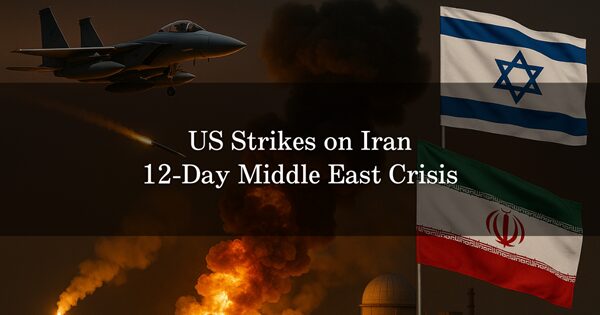


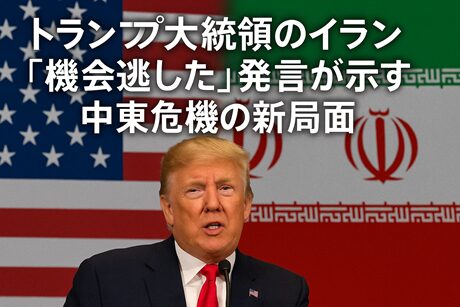

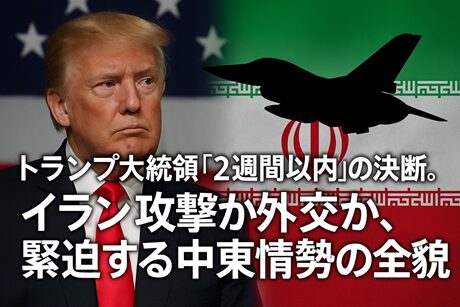

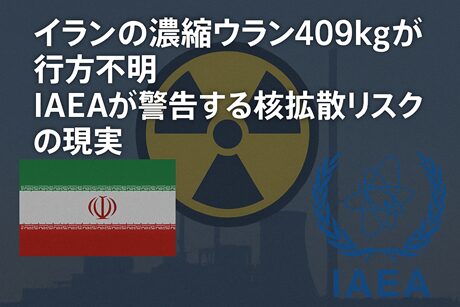

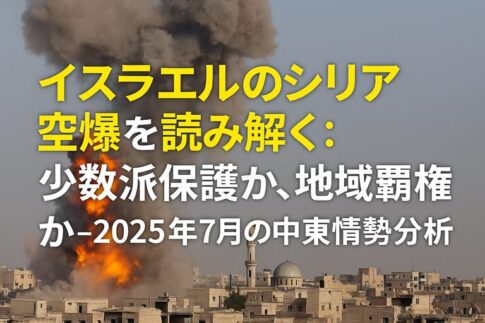







Leave a Reply